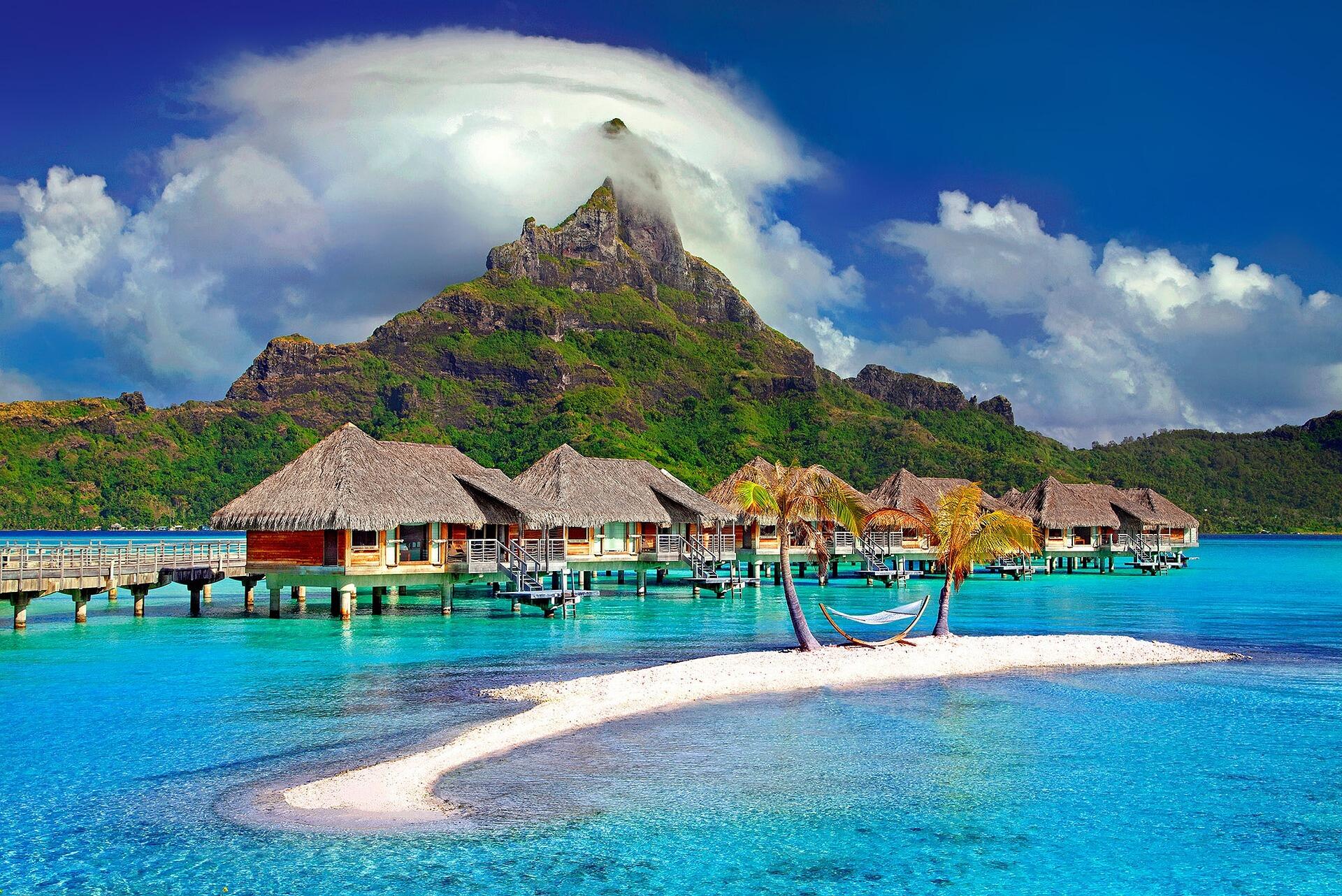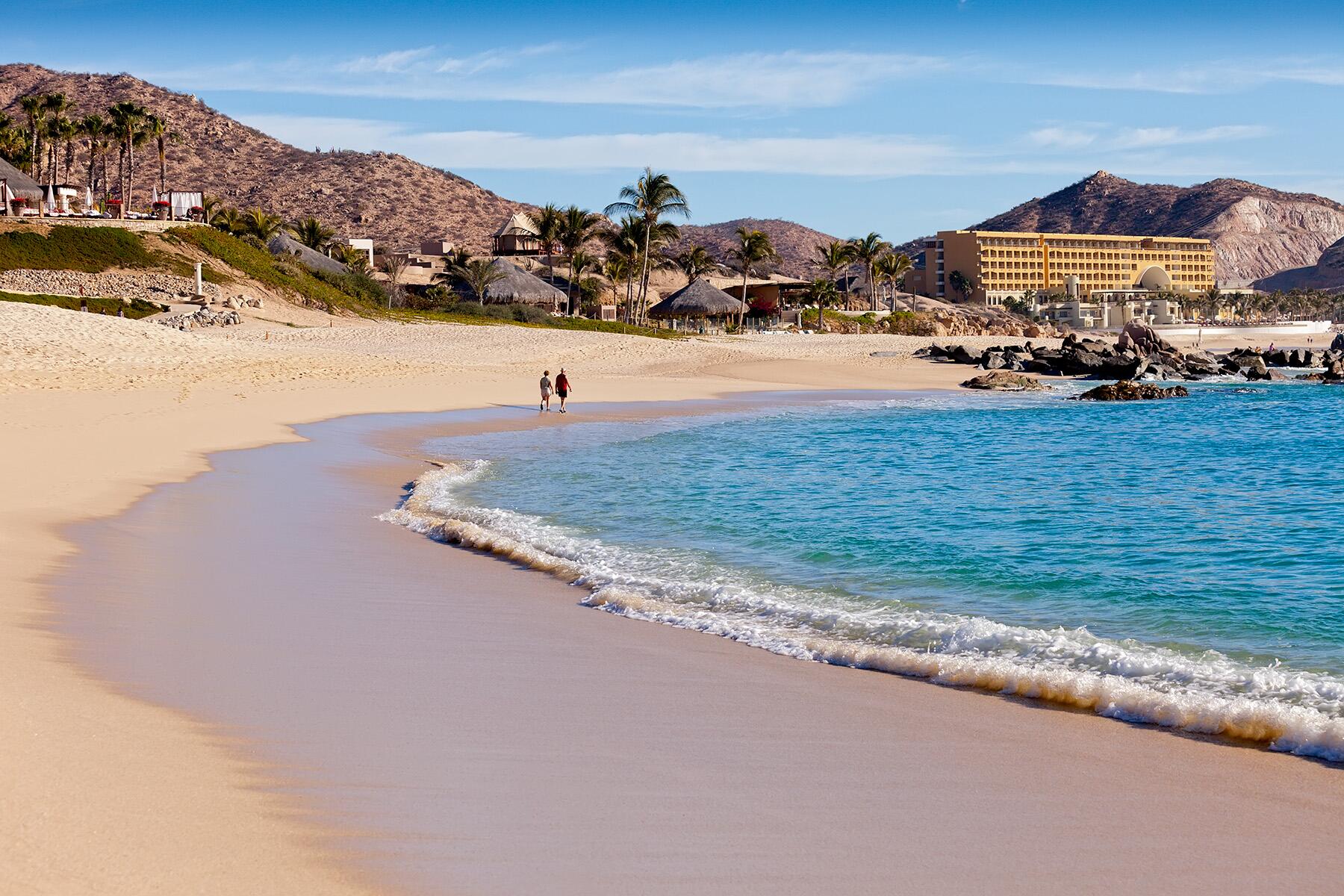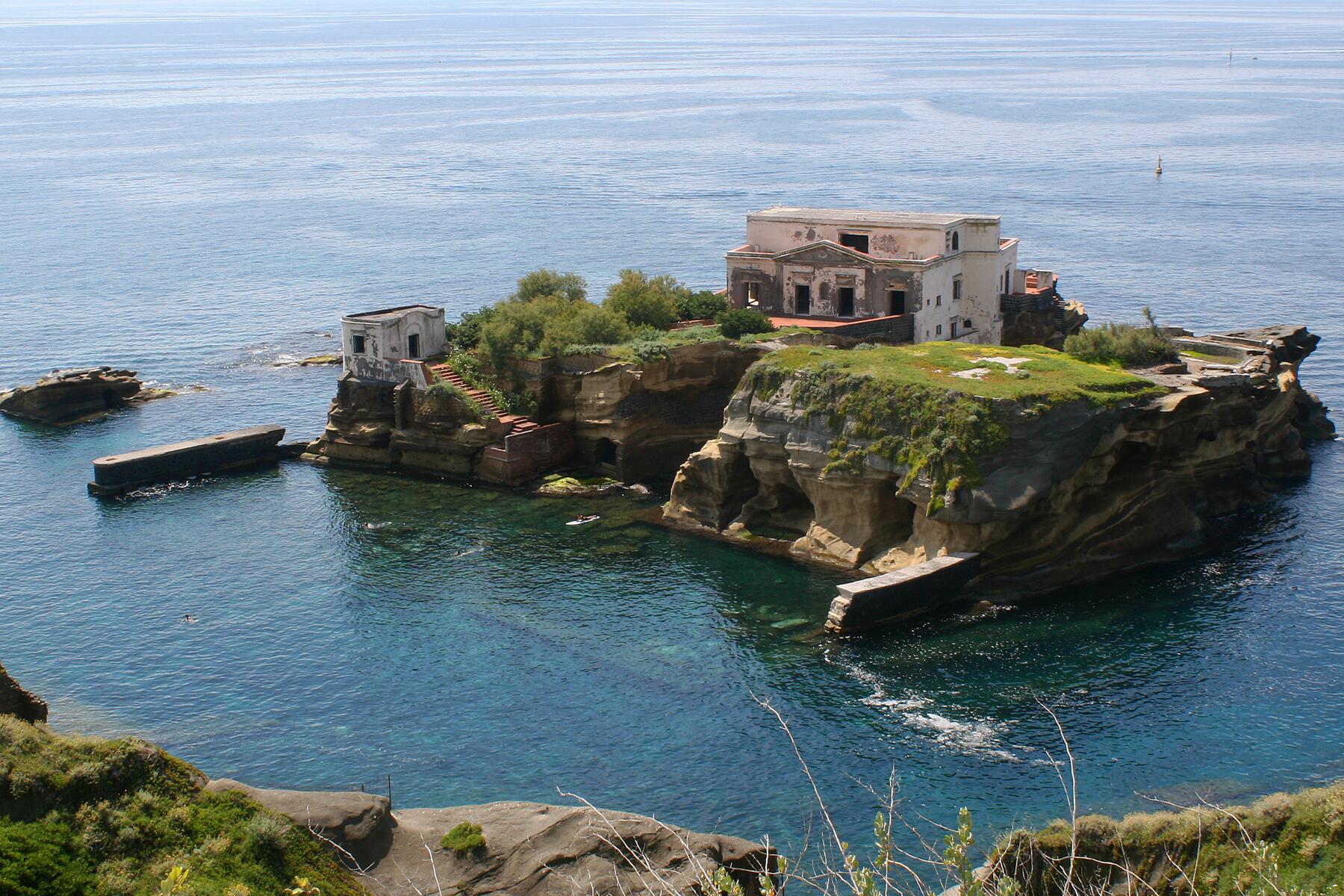No, it's not in Fiji.
Ialways like to say there are two types of people who travel: those who are pleased to be somewhere and those who are pleased with themselves for being somewhere. Every destination has a mixture of both—and naturally, some destinations have a higher proportion of one versus the other.
Bora Bora’s pretty high up in the “pleased with themselves” column, but that’s absolutely not a reason to avoid it. In fact, there are plenty of misunderstandings about the destination, so it might be high time to clear them up.
Many travelers may have heard things in passing about Bora Bora: it’s expensive, a honeymooner’s paradise, with overwater bungalows, and far away. Yup, those are all true—but that’s not the whole truth. Each of those assertions comes with an asterisk. Read on for more details.

Here’s What to Know About Bora Bora
Many people I speak with are completely confused about where Bora Bora is.
“It’s in the Indian Ocean, right?”
No, that’s the Maldives.
“It’s like a 10-hour flight, and you lose a day getting there, right?”
Warmer, but you’re thinking of Fiji.
Bora Bora is an island in French Polynesia, a semi-autonomous overseas department of France in the South Pacific. It’s 45 minutes by air from Tahiti, which is where the country’s only international airport is. Tahiti itself is just eight hours by air from California, and it’s in the same time zone as Hawai’i. Hawaiian Airlines, Air France, Delta Air Lines, United Airlines, French Bee, and Air Tahiti Nui all provide service from the United States to Faa’a International Airport on Tahiti. Air Tahiti and Air Moana provide local service from Tahiti to Bora Bora, and Tahiti Nui helicopters are another, more private transfer option.
There are 118 islands in French Polynesia, spread out across an area of ocean the size of Europe. Seventy-five of those are inhabited, and around 20 of those have some sort of tourism infrastructure. For the purposes of promoting tourism, French Polynesia markets itself as The Islands of Tahiti. Similar to how you might go to Hawaii, specifically Maui, you might also go to Tahiti, specifically Bora Bora.
Recommended Fodor’s Video
Why is this important? Because I’ve boarded many flights to Bora Bora in Tahiti and overheard conversations from visitors who were astonished to learn they had to go through Tahiti to get there, and that French is the official language.
The Honeymooners
According to Tahiti Tourisme, the marketing organization for The Islands of Tahiti, something like 85% of inbound visitors to the country are bound for Bora Bora. And a healthy chunk of those will be on their honeymoon.
It’s so well understood that Bora Bora is a honeymoon destination that I specifically remember my first time checking in at the Air Tahiti ticket counter. After taking my passport, the agent asked, “Et oú est Madame?” (And where is the missus?)
“Pas Madame. Madame c’est moi.” I replied. (There’s no missus. I’m Madame.)
But what is it that appeals to honeymooners so much?
Two words: luxurious seclusion.
Bora Bora’s overwater bungalows (which, incidentally, are not traditional in Polynesia—they were introduced as a resort gimmick in the 1960s) are a big draw. The self-contained bungalows situated directly over the turquoise lagoon, connected by a series of wooden decks, are perfect for honeymooners seeking a nest unto themselves. There are common elements in the bungalows, too. Most have direct-water entry from the deck, glass tabletops for downward views, and below-floor lighting to attract sea life. The most luxe ones have plunge pools incorporated into the decks.
The resorts also tend to go big on food—most of them have a main dining room (typically French), a gastronomic restaurant with a set tasting menu, and an Asian dining outlet. As Bora Bora draws luxury clientele, premium cuts of meat and seafood populate the menu, but even for more middling fare, guests who are accustomed to eating three meals a day should budget around $250 per person per day for meals (but not alcohol).
That is if you even leave the bungalow. They’re designed to spend time in, and a popular amenity is the “canoe breakfast” where breakfast is delivered to the bungalow in an outrigger canoe. At The St. Regis Bora Bora, guests even get to go for a ride in the canoe, which is bedecked with tropical flowers, while attendants set their table, which they cover with more flowers.
It all combines to make for an otherworldly experience—the gentle lapping of the tranquil lagoon waters around the base of the bungalows (the lagoon is protected from the open ocean surf by the coral atoll surrounding the island), the views of craggy Mount Otemanu on the main island, and the white noise of palm fronds fluttering in the trade winds.
The Non-Honeymooners
But what about the travelers who aren’t going to Bora Bora to do what honeymooners do?
Contrary to popular belief, the island isn’t all luxury bungalows. Maitai Bora Bora and Royal Bora Bora are two more moderately priced options, both on the main island of Bora Bora. By “moderate,” we don’t mean “budget,” but they’re certainly more budget-friendly than the luxury resorts, which are routinely in the thousands of dollars per night. The Maitai even has overwater bungalows for travelers who want to try that accommodation style at a lower sky-high rate.
There are also plenty of tours and activities for adventure seekers to book on Bora Bora, from ATV adventures to boat tours. Staying on the main island of Bora Bora also provides much easier access to restaurants (at the luxury resorts on the motu or coral atoll, dinners “out” involve a boat transfer in each direction).
The town of Vaitape is the island’s main community, and it’s the place to go to visit the grocery store to stock up on snacks and takeaway lunches to help stretch some of the food budget at the resorts (if that’s your thing). There are also a ton of pearl shops with Tahitian pearls to fit most budgets, but bargain hunters will honestly find better deals at the public market in Tahiti.
Also on the main island of Bora Bora are several pensions, or Tahitian guesthouses, which can be quite affordable, ranging in amenities from basic to luxe. These can be booked via online travel booking sites, but they’re a pretty personalized experience, so the best way to book these is with a knowledgeable Tahiti Travel Specialist who’s familiar with how they operate.

Picking a Resort
For travelers who do want the luxury experience, the array of resorts can be dizzying.
For picture-postcard views of Mount Otemanu, The InterContinental Bora Bora Resort & Thalasso Spa, The St. Regis Bora Bora Resort, and The Four Seasons Bora Bora are the best bets. They’re all roughly in the same top-tier category, and each has sumptuous restaurants and an expansive spa. The St. Regis also has butler service in every room for guests who are into that level of pampering.
Travelers who want the luxury experience on the main island of Bora Bora can book the InterContinental Bora Bora Le Moana Resort. It’s older than the Thalasso Spa resort, but guests at Le Moana can book treatments at the spa, which include boat transfers to the motu. The resort is also more compact than its sprawling sister property.
For something a bit different, the Conrad Bora Bora Nui is a lovely property with plenty of overwater bungalows and a hilltop spa with commanding views. There’s also butler service in every room here (they call it “Island Host” service, and the services are a bit less structured than those at The St. Regis). Bonus: history buffs will love the collection of photos from the WWII stationing of American troops on the island to serve as a refueling stop between the Panama Canal and Australia and New Zealand on the ground floor of the lobby.
Each of the aforementioned resorts belongs to an international hospitality brand. Another option, widely regarded as the “most Polynesian” of the resorts is Le Bora Bora. Owned by the locally grown hotel group Pearl Resorts of Tahiti, Le Bora Bora certainly takes the prize for being the most “Polynesian-feeling” among the luxury resorts on the island. Most of the staff here are Bora Bora locals (many other resorts depend on expat staff to varying degrees) who deliver warm, familiar service to visitors. The resort itself is situated on a quieter side of the lagoon, so without neighboring resorts, there’s not as much boat traffic.
A Picture-Perfect Destination
“It doesn’t look real” is a common refrain I hear when sharing pictures of the island’s impossibly aquamarine lagoon or lurid sunsets—most likely because the image of Bora Bora—the craggy mountain peak surrounded by a brilliant lagoon—is an almost boilerplate image of a tropical island escape. Even with many of the perceived annoyances—the distance, the swarms of privileged honeymooners, the sky-high price tag—Bora Bora keeps attracting visitors because of its otherworldliness, and it’s not something that travelers should wait for a honeymoon opportunity to experience.




